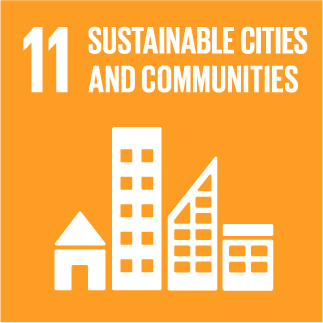Integrated manufacturing of REciclable multi-material COmposites for the TRANSport sector
An n?Doped Organic Cross?Linked Electron Transport Layer with High Electrical Conductivity for High?Efficiency Tandem Organic Photovoltaics
An n?doped ETL, that is c?NDI?Br:PEI with high electrical conductivity, strong work function modification ability and good solvent resistance, is developed via a simple in situ cross?linking reaction. The tandem OPVs, with the all?solution?processed organic/organic ICL (m?PEDOT:PSS/c?NDI?Br:PEI) achieve 20.06% efficiency under solar radiation, and 38.50% efficiency under 808 nm laser. This study provides a new method to design high?perfoimance ICLs.With merits of good solution processability, intrinsic flexibility, etc, organic/organic interconnecting layers (ICLs) are highly desirable for tandem organic photovoltaics (OPVs). Herein, an n?doped cross?linked organic electron transport layer (ETL), named c?NDI?Br:PEI is developed, via a simple in situ quaternization reaction between bromopentyl?substituted naphthalene diimide derivative (NDI?Br) and polyethylenimine (PEI). Due to strong self?doping, c?NDI?Br:PEI films exhibit a high electrical conductivity (0.06 S cm?1), which is important for efficient hole and electron reombination in ICL of tandem OPVs. In addition, the cross?linked ETLs show strong work function modulation ability, and good solvent?resistance. The above features enable c?NDI?Br:PEI to function as an efficient ETL not only for single?junction OPVs, but also for tandem devices without any metal layer in ICL. Under solar radiation, the single?junction device with c?NDI?Br:PEI as ETL achieves a power conversion efficiency (PCE) of 18.18%, surpassing the ZnO?based device (17.09%). The homo? and hetero?tandem devices with m?PEDOT:PSS:c?NDI?Br:PEI as ICL exhibit remarkable PCEs of 19.06% and 20.06%, respectively. Under 808 nm laser radiation with a photon flux of 57 mW cm?2, the homo?tandem device presents a superior PCE of 38.5%. This study provides a new ETL for constructing all?solution?processed organic/organic ICL, which can be integrated in flexible and wearable devices.

» Publication Date: 24/03/2025

This project has received funding from the European Union's Horizon 2020 research and innovation programme under grant agreement Nº 768737


